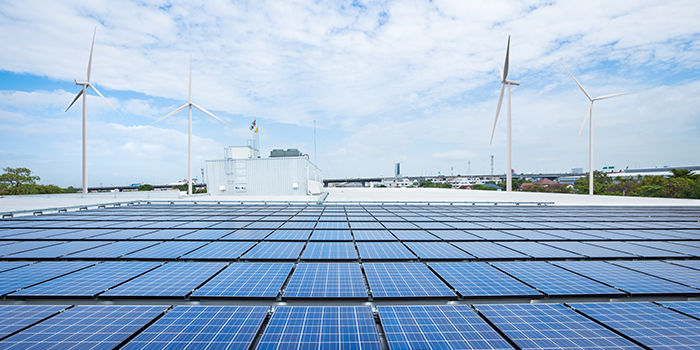On 1 March this year, DTU Wind Energy and DTU’s Center for Electric Power and Energy merged to become DTU Wind and Energy Systems—a department that embraces several aspects of society’s challenges in its transition to green energy.
Peter Hauge Madsen is now the head of a new and larger department with a broader academic range than the one he has previously headed. And the new constellation pleases the head of the department.
“Both DTU Wind Energy and from the Center have had a long-standing wish of strengthening the collaboration. So the merger is a realization of that wish,” says Peter Hauge Madsen.
The current circumstances in Europe and the government’s desire to turbo charge the green transition with a significantly larger production of renewable energy also place demands on the department, which is one of the world leaders in the field.
“With the challenges we face, the energy sector has to undergo radical development in the coming years,” says Peter Hauge Madsen. “It’s not just about producing more and better wind turbines, but also about utilizing energy smarter. You can no longer separate research into technology and the production of renewable energy from the energy systems that enable society’s energy needs to be met. So this merger makes a lot of sense.”
Driven by shared vision
In industry and in society, we also see the trend of joining forces to fortify your position. Nationally, the trade associations Danish Energy Association, WindDenmark, and Dansk Solkraft (Danish Solar Power) have agreed to establish a new joint trade association called Green Power Denmark. And internationally, we see more countries joining forces to establish new wind farms. On a smaller scale, the same trend applies in the field of research with the establishment of the new Department of Wind and Energy Systems.
“We now have a department that can provide sustainable solutions for integrated energy systems backed by wind energy. This is also reflected in our organizational structure with four divisions and almost 400 employees with international expertise and experience working on materials and components, development of wind turbines, power plants with wind turbines, and flexible energy systems,” explains Peter Hauge Madsen.
The first few months since the merger have been spent getting the organization in place and formulating a new vision for the department.
“The new department is vision-driven. We have a common vision of delivering for the green transition and an ambition to have an impact on society—and the world. With the merger, we are in a better position to contribute to the green energy transition.”
Close industry partnership
Historically, there has been close collaboration between DTU and industry in the field of wind energy. The research has been and is application-oriented with an ambition to solve some of society’s challenges and bring the results quickly into application.
“We are focused on creating value from our research, and there is a need for us to think in holistic terms and collaborate with the entire industry. The energy system needs to be designed for use across existing sectors. Sector coupling provides flexibility, and power-to-x, for example, allows the power to be stored as hydrogen or converted into green fuels for air and sea transport. But the green energy transition also presents a number of challenges for how we as a society quickly and efficiently implement the transition with respect for biodiversity, interaction with local communities, other sectors, and security of supply,” the head of department points out.
Demand for graduates
“If we are to deliver thousands of gigawatt hours of green energy from wind turbines and solar for consumption in both households, industry, and transport, it requires research and innovation based on the overall energy system and its interaction with the individual sub-components. But it also requires more engineers as qualified labour for industry. We cannot produce enough engineers to meet demand.
Denmark is internationally known as a pioneer for the green transition, DTU attracts many foreign students who want to educate themselves in this field, and the latest research evaluation showed that DTU Wind and Energy Systems is a leader in wind energy research.
“But we have a current challenge in training enough engineers for industry, so it is counter-productive that the government has set a limit on the admission of foreign students,” concludes Peter Hauge Madsen.
Mission and vision of the Department of Wind and Energy Systems
Mission: DTU Wind and Energy Systems develops science and create value for society for a sustainable and integrated energy system with wind energy as the backbone.
Vision: DTU Wind & Energy Systems is the leading university partner in our field for a world that runs entirely on renewable energy.

